With Airbus cozying up to Silicon Valley and Facebook unveiling a high-altitude UAV designed to take the internet where no wire could ever go, Flightglobal surveys the aerospace ambitions of the tech world titans – all of whom should bear in mind the golden rule of IT start-ups: for every mountain of riches there is a money pit of despair. Quite a few money pits, actually.
1. SpaceX
Of all the Silicon Valley-to-aerospace transition stories, Elon Musk’s stands out – if for no other reason than the SpaceX rockets company he started with the fortune made by co-founding PayPal has moved beyond the start-up stage and become an ordinary, commercial, day-to-day business. And, the spectacular 28 June failure of a Falcon 9 flight to resupply the International Space Station notwithstanding, it has to be said that SpaceX is a success. It's mostly reliable, with a long launch manifest and a juicy contract to move into manned missions to deliver US astronauts to the ISS for NASA from 2017. It turned out to be just talk, but talk in 2013-14 of a stock market flotation raised notions of a $10 billion valuation.
In proper Silicon Valley style, SpaceX has disrupted its market: a Falcon 9 flight to orbit is bookable from about $70 million which, depending on payload and mission, could be as little as half the cost of a launch by Europe’s Arianespace. It compares even more favourably with American arch-rival United Launch Alliance. But the competition is developing new launchers designed to meet – or beat – SpaceX prices, while maintaining rock-solid reliability reputations that SpaceX has yet to build.
So we must be at least a bit wary of assumptions that SpaceX’s trajectory will continue rising like, well, a rocket. Musk’s leadership has thrown up some real innovation – the crewed Dragon capsule’s launch escape rockets should save a crew at any point from launch pad to orbit, a considerable improvement on the nose-mounted abort rockets that hark back to Apollo – but the magic behind SpaceX has mostly been in the industrial structure behind Falcon. In short, the rocket technology is fairly ordinary, but while Arianespace and ULA are burdened by legacy designs and supply chains, SpaceX started from a clean sheet to end up with hardware and a streamlined production system designed for low cost.
Arianespace and ULA, however, can both play at that game – and indeed they are, meaning they should eventually wipe out SpaceX’s cost advantage. Both of these companies are bringing serious financial and engineering resources to bear on their new launchers, so SpaceX will have to invest and improve to keep up – an expensive proposition in the rocket business.
Meanwhile, SpaceX faces the financial and technical challenge of scaling up to launch more frequently – 10-plus times yearly. Part of meeting that challenge is a second launch site, in Texas, to complement its main facility at Cape Canaveral.
Ultimately, SpaceX also faces a challenge in the form of... Elon Musk. The South Africa-born Canadian-American is long on vision and star power – he was the inspiration for the Tony Stark character in Marvel Comics’ Iron Man film, and he’s even married, serially, to a Hollywood star. But while his vision thing is inspiring to encounter it may well bump up hard against reality. As the SpaceX mission statement boldly declares, the company was founded “with the ultimate goal of enabling people to live on other planets”. A big part of the reason Musk is keen on reusable rockets is to keep the cost of shuttles to Mars under control, but reusability is notoriously difficult in the space business and Musk’s plan calls for a doubling – doubling – of launcher efficiency. As if that isn’t challenging enough, SpaceX is pursuing a reusable concept that looks very costly compared to schemes being devised by Arianespace and ULA.
Should Musk decide he needs to go public to raise cash to keep the dream flying, one imagines that prospective investors will be OK with missions to Earth orbit paid for by NASA and some telecoms operators, but might baulk at the bottomless money pit that, surely, is a colony on Mars.
If Musk turns out to be the technology wizard able to make trips to Mars a practical reality, then more power to him. But no matter how much some people want it, and no matter how relentlessly NASA’s PR machine talks it up, Mars is a very, very big “if”.
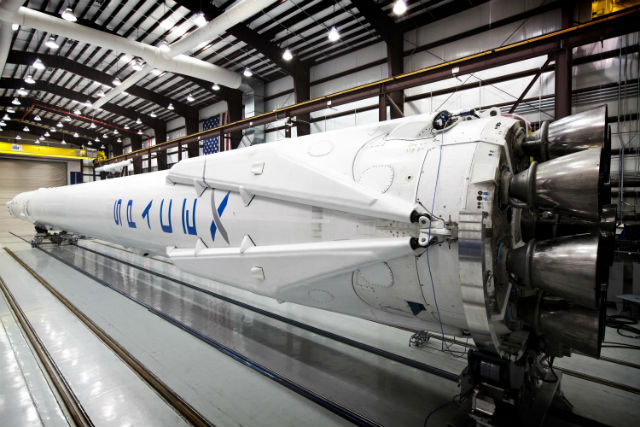
Falcon 9 – note the foldable landing legs for main stage recovery
SpaceX

Hollywood star Talulah Riley – note geek husband lurking in background
Rex Features
2. Facebook Aquila
The record-holder for powered endurance flight is the solar-powered Qinetiq Zephyr, which completed a 14-day flight in 2010. A British composites engineer named Andrew Cox consulted on the structural requirements and definition of the Zephyr. He then founded a new company, Ascenta, with the aim of developing a high-altitude, solar-powered UAV capable of flying for more than three months at a time.
In March 2014, social media giant Facebook acquired Ascenta for a reported price of $20 million. The UAV project was pulled into Facebook’s internet.org initiative, which aims to provide online access to areas where satellite and terrestrial networks are not practical. Facebook unveiled the completed Aquila prototype in a 30 July video, promising to enter a flight test phase in the near future.
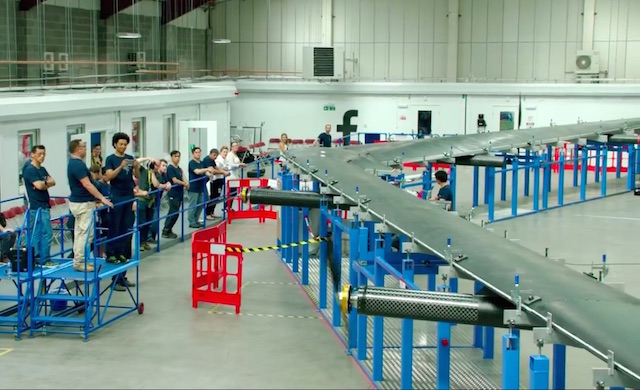
World's highest wi-fi router
3. Blue Origin
Jeff Bezos, the power behind the mighty online marketplace Amazon, is bankrolling Kent, Washington-based rocket developer Blue Origin. In April this year, the company took a major step towards entering the commercial suborbital flight market, with the first test flight – to an edge-of-space 307,000ft – of its New Shepard capsule and BE-3 launcher.
The capsule landed safely by parachute, but the throttlable main propulsion stage – which should have returned to the pad for a controlled vertical landing and, in principle, refurbishment and re-use – was lost owing to “loss of hydraulic pressure” during descent.
Significantly, the BE-3 is a precursor to the more powerful BE-4, which is being developed in partnership with United Launch Alliance and is due for test firings in 2016 and flight in 2019. Two of the 550,000lb-thrust, liquid oxygen/liquefied natural gas BE-4 engines will provide thrust equal to the RD-180 first stage engine that powers United Launch Alliance’s Atlas V.
RD-180s ultimately come from Russia, the supply of which has been cut off in the trade sanctions tit-for-tat over Ukraine. The ULA-Blue Origin proposal is one response to the US Air Force's call for an all-American launch engine to ensure that foreign entanglements don’t interfere with US space security – so whatever comes of his suborbital flights venture, Bezos may well end up having put his money behind a winner.
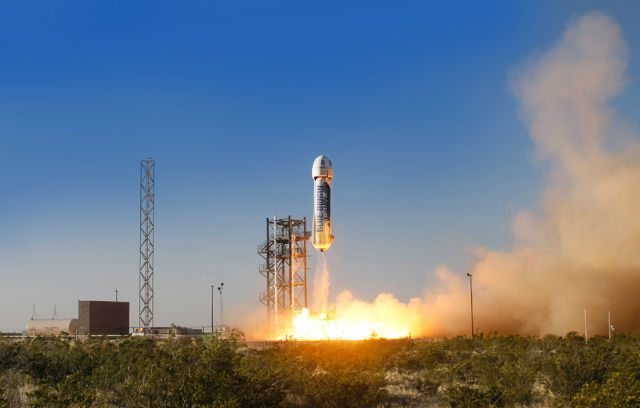
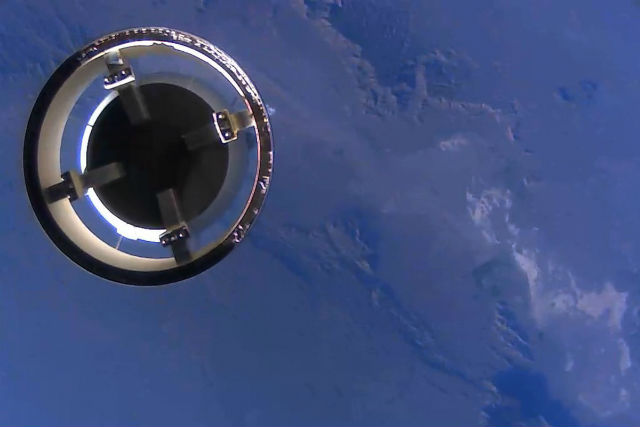
Lift-off and capsule separation during 2015 test flight
Blue Origin
4. Stratolaunch
Paul Allen's Stratolaunch project has heritage, in that the Microsoft co-founder can fairly be described as the pioneer of private spaceflight. He bankrolled the SpaceShipOne project that in 2004 won the $10 million Ansari X-Prize for making the first civilian trip to space, subsequently morphing into Richard Branson’s Virgin Galactic.
Common to all three projects are air-launching and the aero-engineering brain of Burt Rutan. But while Virgin Galactic’s SpaceShipTwo is, to over-simplify, a beefed-up version of SpaceShipOne, Allen’s subsequent venture takes air-launching into virgin territory where size really, truly matters.
Details are a bit short, but Stratolaunch expects to be able to put 6,100kg payloads into low-Earth orbit – and will need the biggest aircraft ever produced to do so. That aircraft – a twin-fuselage monster with a 385ft (117m) wingspan, 1.3 million lbs (590,000kg) gross weight and powered by “six 747 engines” – is under construction and reportedly set to fly in 2016. Orbital Sciences is to build the rocket it hefts to altitude – though Stratolaunch is said to be considering multiple launch vehicles – and the company is also working with Sierra Nevada on the feasibility of launching the latter’s seven-crew Dreamchaser spaceplane concept.
How much Allen plans to charge for a launch remains to be seen, but if Virgin Galactic’s planned $10 million for its much smaller – 250kg to LEO – LauncherOne offering is any gauge, it could well be the $40-ish million for a conventional vertical take-off Soyuz flight.
Air launch offers some advantages. Launch is possible from pretty much any location with a long enough runway, and booking-to-flight times should be much shorter. Structurally, it is obviously attractive to lift the rocket above the thickest part of the atmosphere before lighting it off for acceleration to hypersonic speeds.
The air launch success story to date, though, is short. Orbital’s Pegasus rocket can orbit a little more than 400kg from an L-1011. Whether going really big, as Allen is attempting to do, proves to be economical is an open question. Elon Musk once said that he’d dismissed air launch because so much of the rocket’s energy is wasted “starting out in the wrong direction” – but perhaps he would say this, being in the conventional vertical launch business.
Indeed, Allen’s Stratolaunch rocket will be so big as to need wings to make the turn to vertical after drop and ignition.
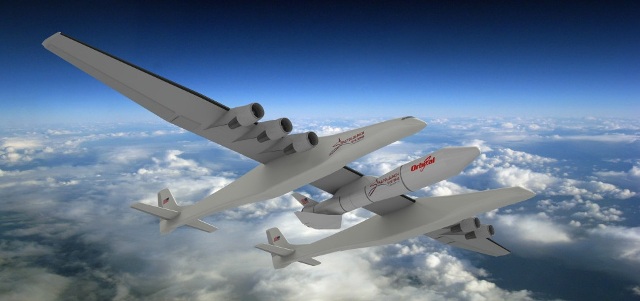
Real thing on the way
Stratolaunch
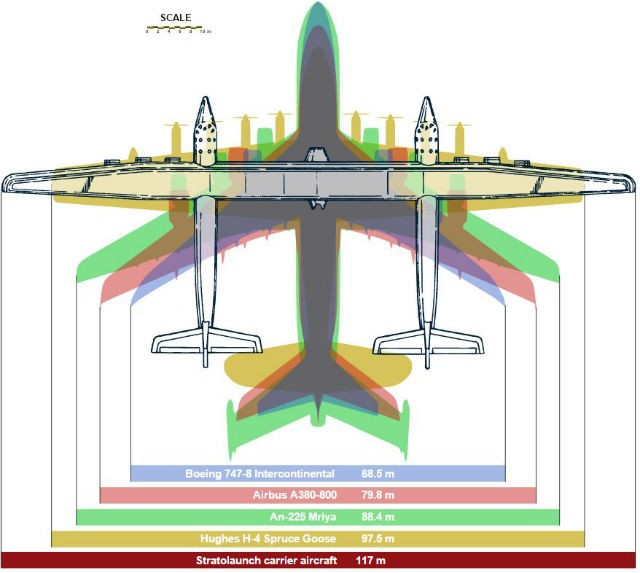
Yup, that's big
Mwarren us/wikimedia commons
5. Google Project Wing
Google is headquartered in Silicon Valley, which is most famous for two things: high-tech start-ups and bad traffic. As Google happens to be among the most successful of the former, it thinks it can help improve the latter – by deploying unmanned air vehicles (UAVs). In a public presentation last March, Google Project Wing director Dave Vos explained that small UAVs can help traffic congestion by removing delivery vehicles from crowded urban streets.
That’s why Google last year began testing a flying wing-shaped UAV in Australia. However, the company has since decided to use a different UAV design that it has not yet disclosed.
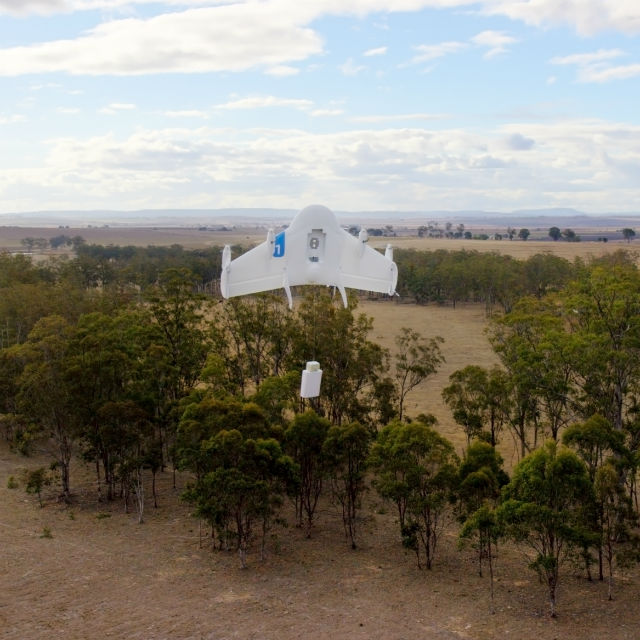
It was going to look like this, sort of
6. StratEx/World View
Alan Eustace, a former senior VP for knowledge at Google, stayed inside the atmosphere – just – with his StratEx free fall parachute jump from a helium balloon that carried him to a jump-record 135,908ft (41,425m) in October 2014. But where a space suit-bedecked Eustace essentially hung from the ropes and let go for the ride back to the ground, he has a less hair-raising plan for commercialising the experience. More-or-less the same balloon will carry fare-paying passengers to 100,000ft-plus in a “luxury capsule complete with bar and lavatory”.
These World View “space cruises” – lasting some 5-6hrs in total, including about 2hrs above 100,000ft and complete with views of the Earth’s curvature and black, black space – are being sold at an introductory price of $75,000.
After a gentle ascent and high-altitude cruise, the pilot will let some gas out of the balloon to start back home, with a parawing-controlled descent from about 50,000ft and, ultimately, a “gentle” touchdown on skids as far as 300 miles (480km) from the launch point. Tucson, Arizona-headquartered World View will then lay on a private aircraft to shuttle everybody back to whence they came.
The capsule journeys are also available to researchers, who should relish the opportunity to get their instruments above 99% of the atmosphere.
World View passengers won’t experience the 6min or so of weightlessness they could get from a ride with Virgin Galactic, but the company doesn’t have to grapple with the technical challenges of air launches, rockets and multi-Mach gliding. Ballooning – the oldest of aerial pursuits – sounds like a safer bet.
In June 2014, 2014, World View completed a 10% scale test flight of its “balloon spaceflight system”, and is already carrying research payloads for NASA; manned flights should begin in 2017.
Meanwhile, a deposit of $5,000 gets you in the queue, balance payable 180 days before departure. World View accepts reservation deposits via check, wire transfer or debit/credit card (including American Express). PayPal may be more difficult, but there will be wi-fi in the luxury capsule, so passengers should be able to shop online, tweet and email while enjoying unparalleled views and refreshments from the highest bar (and lavatory) in the world.
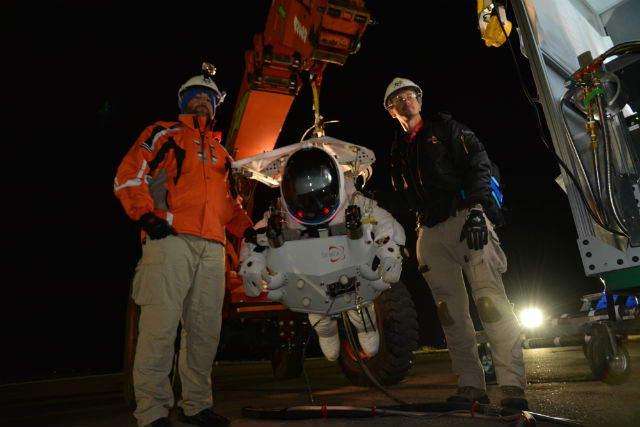
Alan Eustace took the pure route to 136,000ft...
StratEx
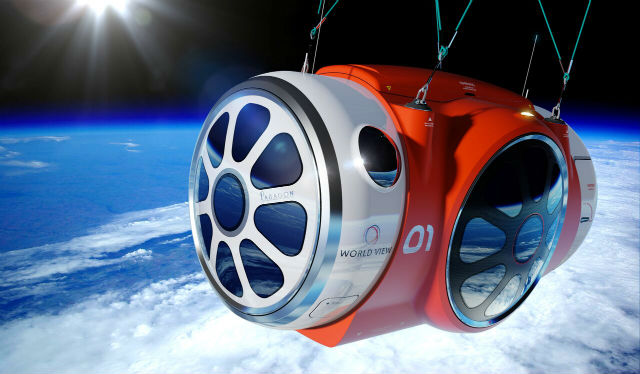
Champagne and canapes inside...

...but do look at the view, too
World View
7. Project Loon
Google’s idea of making the internet more affordable and accessible to the entire planet involves high-altitude balloons and some very clever software. A pilot test in 2013 in New Zealand launched 30 balloons into the stratosphere above 60,000ft. The balloons controlled their position by manoeuvering the stratified layers of wind in the atmosphere. Each balloon connected into a local LTE grid, providing wi-fi-like service over a broad area.
Google has also created an automated assembly line to manufacture the large balloons in bulk quantities. Sri Lanka is reportedly considering becoming the first national customer of Project Loon, beginning next spring. The island nation would require thousands of balloons to provide coverage.

With Google's help, the Montgolfier brothers could have been tweeting
Rex Features
8. Titan Aerospace
2014 was a good time for a start-up to be working on a high-altitude, solar-powered unmanned air vehicle. Google and Facebook were actively prowling the market for such a technology, seeking to actualise an ambitious vision of providing global internet access.
A small start-up named Titan Aerospace, sensing interest from the high-tech giants, hired a new chief executive named Vern Raburn – formerly founder of Eclipse Aviation, and one of the original software entrepreneurs.
Raburn then orchestrated a deal for Google to acquire Titan Aerospace, reportedly rejecting a rival bid from Facebook. The acquisition provided Google with the solar-powered Solara UAV, designed to fly up to 60,000ft and beam internet service down to the ground. In an early test on 1 May, a Solara UAV crashed near Titan’s base in Moriarty, New Mexico – but Google remains committed to continuing development, recently announcing a plan to move Titan’s staff from New Mexico to Silicon Valley.
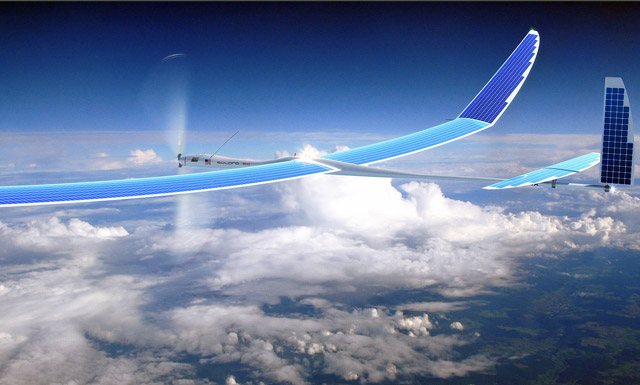
Solara, heading for Silicon Valley
Titan Aerospace
9. Amazon Prime Air
Amazon has theorised that consumer demand will increase significantly if products can be delivered to the door within minutes of purchase.
To make that possible, Amazon envisions a day – not too long in the future – when a fleet of octorotor UAVs will fly over urban streets, moving small parcels from a warehouse to a doorstep within minutes or even seconds. The Prime Air concept was revealed in a 60 Minutes interview in April 2013, then illuminated in greater detail in a patent filing published last April.
Like all commercial UAV projects in the USA, Amazon’s concept relies on a loosening of regulatory limits by the US Federal Aviation Administration. But there’s no doubting that Amazon intends to deploy the fleet as soon as possible, even – as an executive told Congress last March – if it means the company has to launch the service first in a different country.
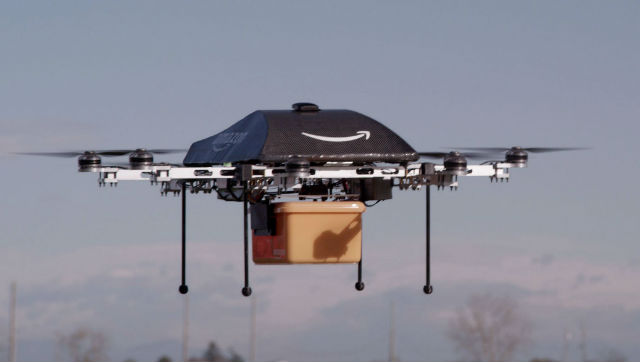
Your order has been dispatched
Rex Features
Source: FlightGlobal.com


























